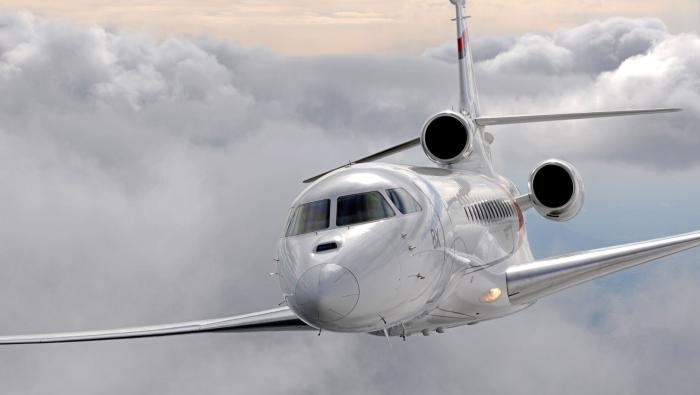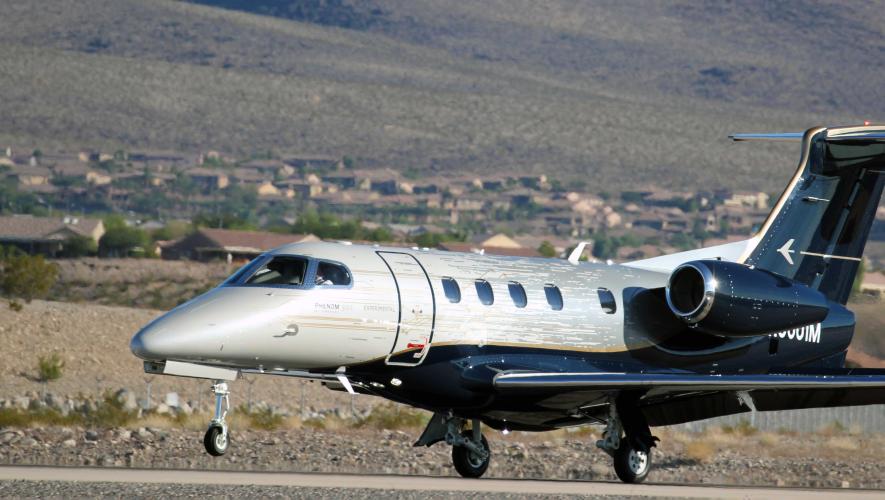Embraer announced creation of its executive jets division in the spring of 2005, simultaneously revealing the launch of its first “clean-sheet” business jets–the Phenom 100 very light jet and the larger Phenom 300 light jet.
Two years later, the Phenom 100 is within weeks of certification and the first Phenom 300 made its first flight on April 29, at least two months ahead of schedule. The Brazilian manufacturer has announced the launch of two more airplanes: the “midsize” Embraer MSJ and the smaller “midlight” Embraer MLJ.
At the same time, the cabin of the first Lineage 1000, a 19-passenger, executive/VIP version of the company’s E190 airliner, is nearing completion and the second Lineage is due to roll off the assembly line in June.
To put an exclamation point to the company’s avowed goal of becoming an established major player among business aircraft manufacturers, Embraer announced it has delivered more than 110 Legacy 600 executive/ VIP versions of its ERJ 135 regional jet. And rather than leveling off, the company reports that demand for the large-cabin, $26.93 million aircraft continues to climb. Last year, Embraer delivered 36 Legacys, exceeding expectations by six airplanes.
According to Embraer production director Almir Borges, the company will be producing six Phenom 100s a month at its Botucatu factory by the end of this year. As production ramps up through 2009, he added, the rate is projected to reach 17 airplanes a month. The manufacturer plans to deliver as many as 15 of the five-passenger airplanes this year, and nearly 170 in 2009, according to Embraer Executive Jets executive vice president Luis Carlos Affonso.
Pre-assembly of the Phenom 100 fuselage and wings is being done at Botucatu, after which the components are trucked to Gavião Peixoto for wing-mating, final assembly, cabin completion, exterior paint, flight test and delivery. Separation of the two production phases, said Borges, is a function of two very different core competency requirements and is expected to streamline the production process.
Embraer is pricing the Phenom 100 at $2.95 million for North American customers whose aircraft meet U.S. Federal Aviation Administration certification requirements. For European customers whose aircraft must meet more rigorous requirements of the European Aviation Safety Agency, including a second DME and weather radar, the aircraft will cost $3.05 million.
Even as production is ramping up on the Phenom 100, the manufacturer is including as standard features modifications developed during the flight test program. They include aerodynamic wing fences to allow lower approach and takeoff speeds, a dorsal fin enlargement and ventral fin. According to Affonso, the modifications were not necessary for the airplane to meet the projected performance figures, but were incorporated into the production aircraft “to make a good airplane better.”
Embraer had considered and then rejected winglets for the Phenom 100, partly because of the weight sensitivity of such a small airplane. Affonso also noted that the benefits of winglets are minimal on a straight wing such as that on the Phenom 100.
Phenom 300 Now Flying
Even as the company prepares to begin production of the Phenom 100, it has been able to start the 1,400-hour flight test program for the Phenom 300 ahead of schedule thanks to efficiencies resulting from its entirely digital development process. The first example of the new type was rolled out on April 14 from the Botucatu factory and made its first flight from the Gavião Peixoto test center barely two weeks later, on April 29.
While it might be easy for observers to think of the Phenom 300 as a derivative of the Phenom 100, this couldn’t be further from reality, cautioned Affonso. Although the airplane has the same fuselage cross section as its VLJ cousin, the longer, $6.65 million Model 300 also has a projected maximum takeoff weight of a little over 19,000 pounds, about double that of the 100.
Embraer is aiming for certification of the Phenom 300 in the middle of next year. It mated the wing and the fuselage of the first aircraft and installed its engines on March 18, having completed the first electrical power-on test on March 4.
When both programs reach maturity and full production by late next year, Embraer expects to be building 22 Phenoms a month– 17 Model 100s and five 300s. The company claims a combined order book for more than 700 aircraft.
Midlight and Midsize Fits Embraer Strategy
In April, Embraer confirmed that it had board approval to formally launch its Embraer MSJ (midsize jet) and Embraer MLJ (midlight jet) programs. The company first publicly floated these models at last year’s NBAA convention in Atlanta, Georgia; they are intended to plug the product line gap between the Phenom 300 and the Legacy 600 models.
The two aircraft share a common fuselage cross section with a six-foot, stand-up, flat-floor cabin; Honeywell’s HTF7500-E engine; a common pilot type
rating and Rockwell Collins’ ProLine Fusion avionics suite with sidestick, fly-by-wire controls. Engineering and parts commonality, said Affonso, will help keep development costs over the next six years to about $750 million.
The MSJ is being designed for a range of 3,000 nm with four passengers, or 2,800 nm with eight passengers, at Mach 0.80 (NBAA IFR reserves). The MLJ is expected to have a range of 2,300 nm with four passengers, or 2,200 nm with eight passengers at Mach 0.78 (NBAA IFR reserves).
Affonso said development is moving forward rapidly, with a team of more than 200 engaged in design and engineering. They have already concluded preliminary wind tunnel tests, have created digital models of the aircraft Catia V5 software and have performed computational fluid dynamic simulations.
In a departure from its in-house development, construction and assembly of the Phenom 100 and Phenom 300, Embraer is negotiating with risk-sharing partners for the MSJ and MLJ. Following the pattern adopted for the Phenom 100 and Phenom 300 aircraft, Affonso said the MSJ will enter service first, in the second half of 2012, followed about a year later by the MLJ.
Legacy and Lineage
With all the new-jet activity, Embraer has not ignored the business jet derivatives of its airliner family.
The most recent is the $42.95 million, 19-passenger Lineage 1000. The first aircraft is in the U.S. where an executive/VIP interior is being installed under contract with PATS Aircraft Completions in Georgetown, Delaware. Following completion of the interior, the airplane will be returned to Embraer’s São José dos Campos main plant for exterior paint prior to delivery to launch customer Aamer Abdul Jalil Al Fahim of Abu Dhabi.
A second Lineage is due to roll into PATS at about the same time the first is rolling out. Embraer plans to deliver as many as six Lineages in 2009, most
of which are expected to go to PATS for cabin completion work. While PATS will develop the supplemental type certifications for the cabin, Embraer will own them.
The Legacy 600 super-midsize executive jet was built on the ERJ 135 regional jet platform and was Embraer’s initial foray into the business jet market. The Legacy went into service in 2002 and last year the company delivered the 100th airplane. And according to the company, rather than leveling off, demand for the $26.93 million, 19-passenger twinjet has continued to climb.
Last year, the Legacy received a facelift that included such standard and optional items as a drop-floor that increases centerline headroom to six feet, fully berthable seats from B/E Aerospace, slimmer lighting valances that add still more headroom and iPod docks. The galley got a major makeover with such optional and standard improvements as increased counter space, a dual-compartment ice drawer, larger trash container, larger water tank, wine chiller, refrigerator, convection oven and espresso maker.
Embraer foresees delivery of 13,150 executive jets over the next decade, with a total value of $201 billion. Like other business aircraft manufacturers, the Brazilian group is seeing rapid growth in demand in emerging markets outside North America, such as Asia and the Middle East.







